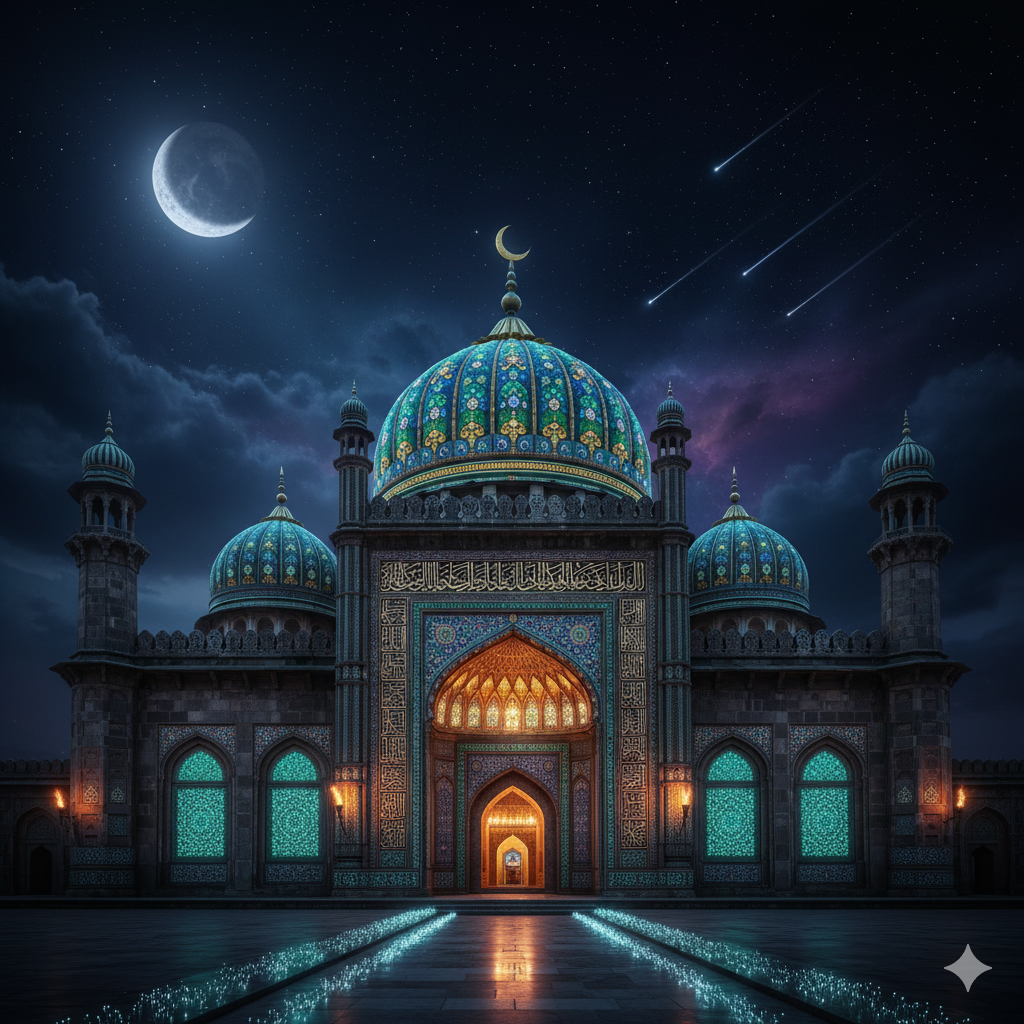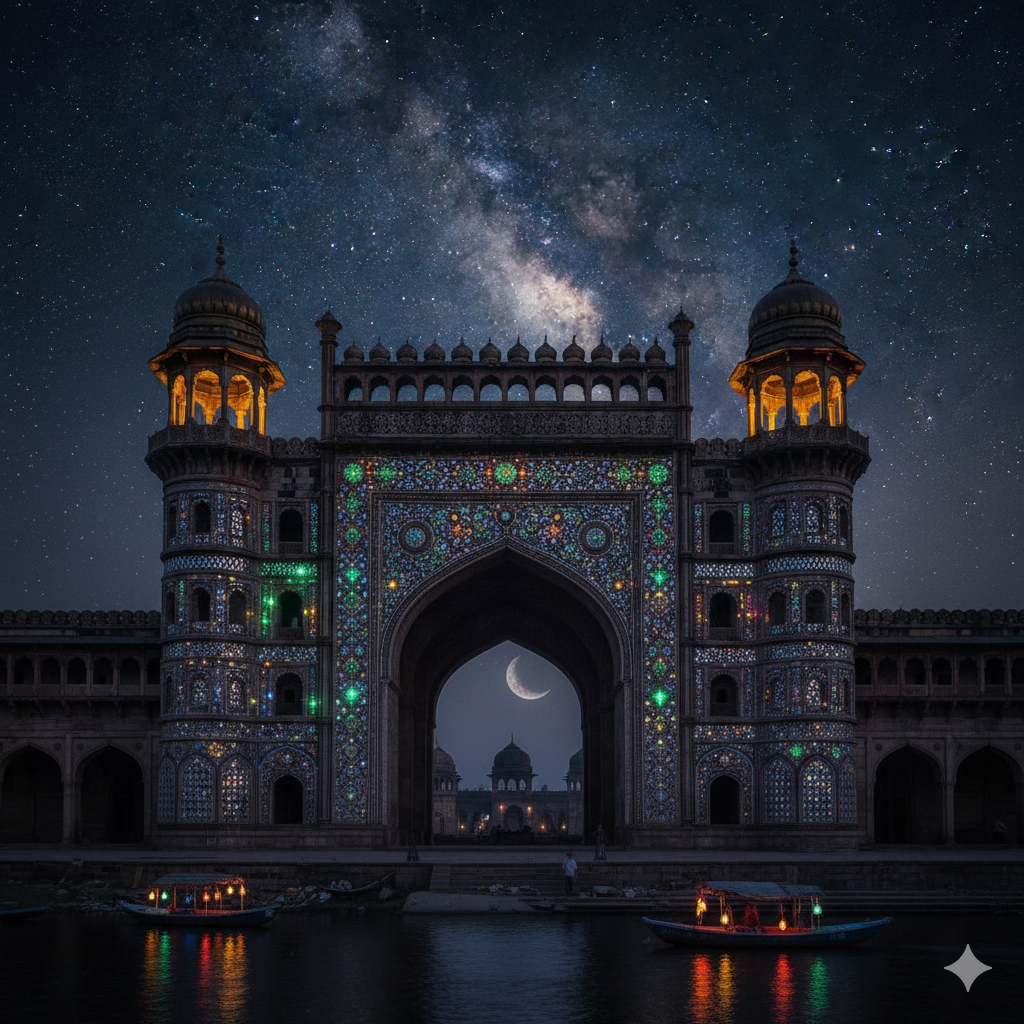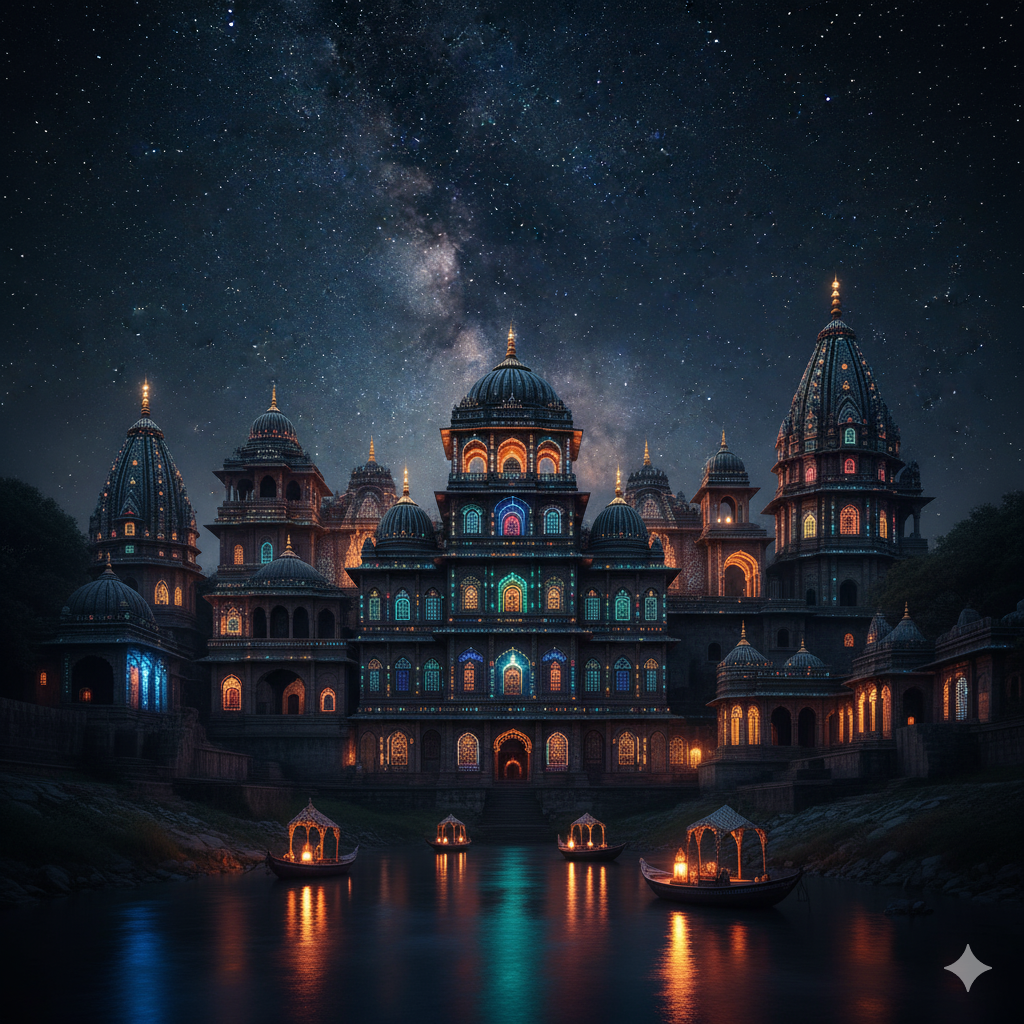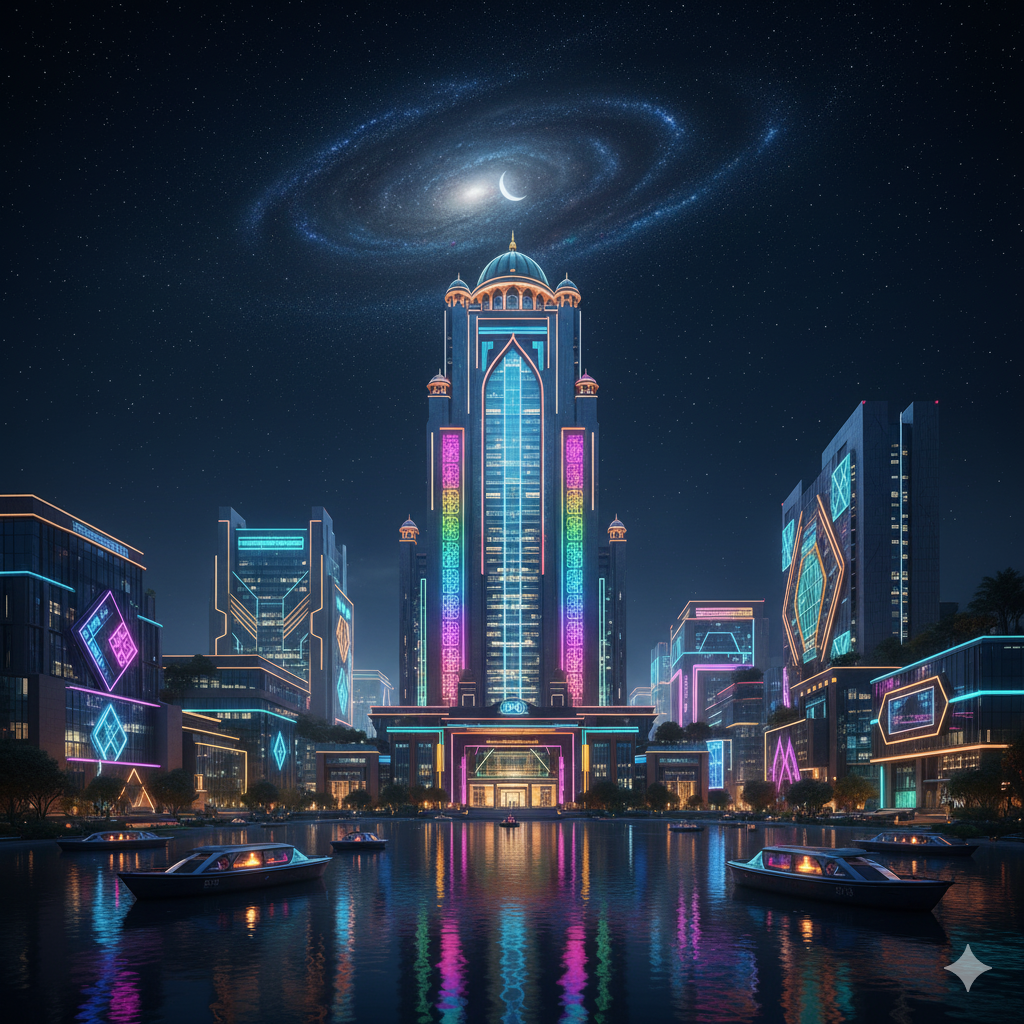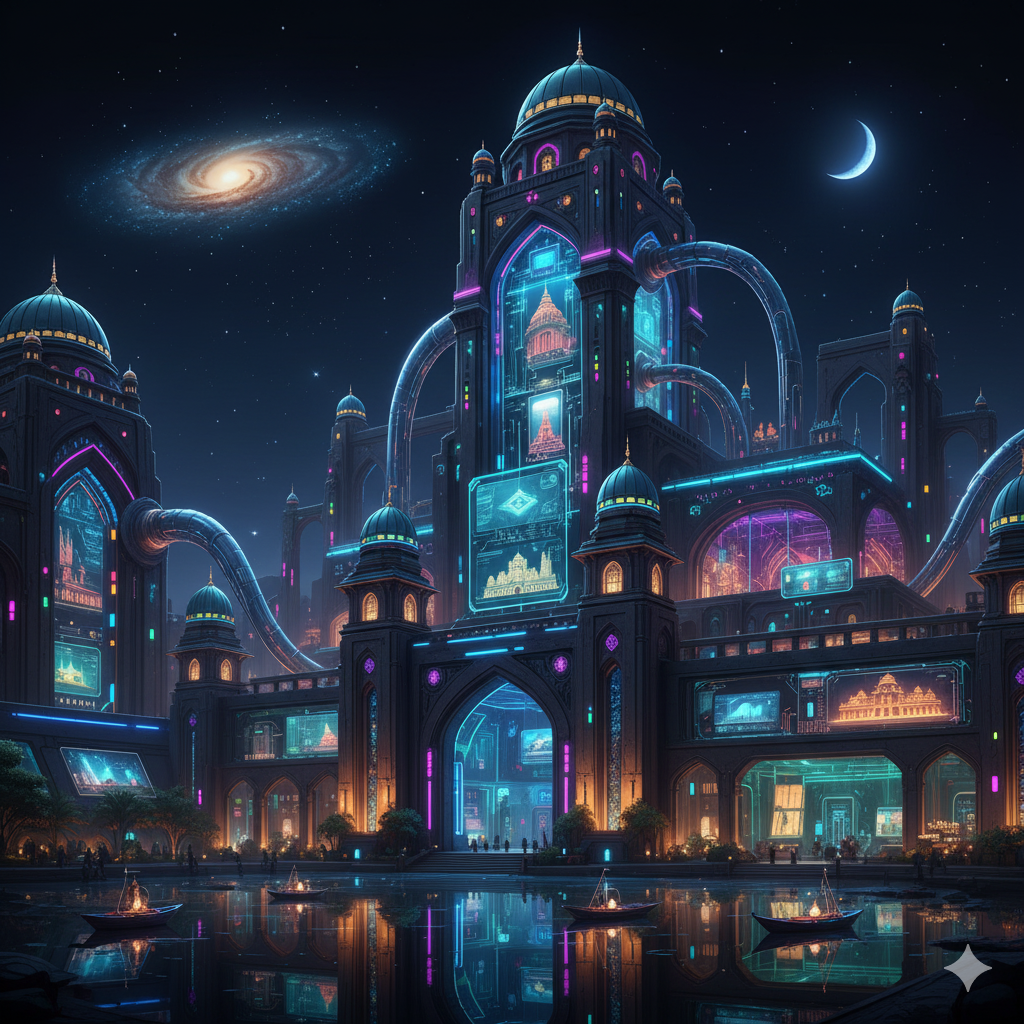Introduction
The history of Indian architecture is a dynamic narrative of cultural fusion, religious interaction, and artistic innovation. Among the many regional styles that emerged in medieval India, the Sharqi architectural style of Uttar Pradesh occupies a distinguished place. It developed primarily during the reign of the Sharqi dynasty of Jaunpur (1394–1479 CE), a powerful regional power that arose after the decline of the Delhi Sultanate and before the rise of the Mughals.
The Sharqi rulers, especially Sultan Ibrahim Shah Sharqi, Mahmud Shah Sharqi, and Hussain Shah Sharqi, contributed immensely to the evolution of a unique architectural identity centered in Jaunpur — often known as the “Shiraz of India” due to its cultural brilliance and artistic refinement.
Sharqi architecture represents a transitional phase between the early Delhi Sultanate architecture and the later Mughal style, blending Persian-Islamic elements with local Indian motifs and building traditions. In the context of Uttar Pradesh, this style not only shaped regional aesthetics but also left an enduring legacy in the field of medieval Indian art and architecture.
Historical Background of the Sharqi Dynasty
1. Political Context
The Sharqi dynasty was founded by Malik Sarwar, a powerful noble and governor of Jaunpur under the Tughlaq rulers of Delhi. In 1394 CE, amidst the political chaos following Timur’s invasion, Malik Sarwar declared independence and assumed the title Sultan-us-Sharq (King of the East). This marked the beginning of the Sharqi Sultanate of Jaunpur, which ruled over large parts of eastern and central Uttar Pradesh for nearly a century.
The dynasty’s rulers — Malik Sarwar, Mubarak Shah Sharqi, Ibrahim Shah Sharqi, Mahmud Shah Sharqi, and Hussain Shah Sharqi — not only consolidated political power but also transformed Jaunpur into a major cultural, educational, and architectural center.
2. Cultural and Religious Setting
Jaunpur became a renowned hub of Islamic scholarship, Sufism, music, and architecture. The Sharqi rulers, particularly Ibrahim Shah, were patrons of learning and art. The architecture of this period reflects the rulers’ desire to create a distinct regional identity, separate from Delhi, while drawing inspiration from Persian, Central Asian, and indigenous Indian traditions.
3. Architectural Significance
The Sharqi period witnessed the construction of numerous mosques, madrasas, tombs, and bridges, mostly concentrated in Jaunpur, but also extending to Varanasi, Ghazipur, Etawah, and Lucknow. These structures exhibit a remarkable blend of simplicity, grandeur, and structural ingenuity, forming the core of what is called Sharqi architecture.
Characteristics of Sharqi Architecture
The architectural features of the Sharqi style represent a harmonious synthesis of Islamic and Indian design elements. Below are its most notable characteristics:
1. Massive and Lofty Arches
- One of the defining features of Sharqi architecture is the use of bold pointed arches that dominate the façade of mosques and gateways.
- These arches are wide, tall, and deeply recessed, symbolizing grandeur and openness.
- The central arch (usually at the main entrance or mihrab wall) is often higher and broader than the side arches, providing a sense of proportion and balance.
- The architectural design of arches in Jaunpur inspired later constructions in the Mughal period.
2. Use of Local Materials
- Unlike the marble and red sandstone used later by the Mughals, Sharqi builders primarily employed grey sandstone, lime mortar, and locally available stone.
- The buildings have a robust and austere appearance, characterized by thick walls and plain surfaces.
- Despite the simplicity of materials, Sharqi structures achieved elegance through geometrical symmetry and proportion.
3. Absence of Domes in Early Structures
- In the earliest Sharqi mosques, such as the Atala Masjid, large domes were conspicuously absent.
- Instead, the central prayer halls had flat or slightly vaulted roofs supported by massive pillars and arches.
- Domes became more prominent in the later period, especially during the reign of Hussain Shah Sharqi, when architectural influence from Delhi and Bengal became evident.
4. High and Towering Pishtaq (Entrance Arches)
- The pishtaq, or high rectangular frame surrounding the main entrance arch, became a hallmark of Sharqi architecture.
- This feature, borrowed from Persian design, was adapted in Jaunpur to give buildings a vertical emphasis and monumental character.
- The towering pishtaq later influenced Mughal architectural façades.
5. Distinctive Minarets and Pillars
- Instead of slender minarets, the Sharqi mosques often featured massive tapering towers at the corners of the façade.
- These towers were often decorative rather than functional, symbolizing strength and permanence.
- Pillars and brackets inside the structures reveal traces of Hindu and Jain temple architecture, reflecting local craftsmanship.
6. Simplicity and Solidity
- The Sharqi style emphasizes simplicity, symmetry, and structural strength over ornamentation.
- Decoration was minimal, limited to geometric carvings, Arabic inscriptions, and floral motifs.
- This austere yet dignified approach gives Sharqi monuments a sense of solemnity and spiritual depth.
7. Integration of Indian Architectural Elements
- Local Hindu and Jain artisans contributed to Sharqi constructions, leading to the incorporation of Indian decorative motifs, corbelled arches, and lotus medallions.
- The blending of Islamic calligraphy with Hindu floral ornamentation created a hybrid aesthetic unique to Jaunpur.
8. Emphasis on Proportion and Geometrical Precision
- Every building of the Sharqi period demonstrates a keen sense of geometric balance and proportion.
- The alignment of arches, the height-to-width ratio of halls, and the spatial arrangement of courtyards were carefully calculated.
- This precision reflects the scientific understanding of architecture prevalent in medieval India.
Major Monuments of Sharqi Architecture in Uttar Pradesh
The city of Jaunpur, situated on the banks of the Gomti River, served as the nucleus of Sharqi architecture. It houses several iconic monuments that define this style.
1. Atala Masjid (1408 CE)
- The Atala Masjid, commissioned by Sultan Ibrahim Shah Sharqi, is the most celebrated example of Sharqi architecture.
- Construction began during the Tughlaq era (under Feroz Shah) but was completed by Ibrahim Shah in 1408 CE.
- Architectural features:
- A massive central pishtaq rising nearly 23 meters high.
- Absence of a dome — instead, the prayer hall has a flat roof supported by arches.
- The mosque’s interior includes carved screens, stone panels, and lattice work.
- The façade’s combination of soaring arches and simple stonework sets the tone for later Sharqi constructions.
- The Atala Masjid exemplifies the fusion of Persian and Indian styles, making it a cornerstone of Indo-Islamic architecture.
2. Jami Masjid (Friday Mosque, 1470 CE)
- Built during the reign of Hussain Shah Sharqi, the Jami Masjid represents the culmination of Sharqi architectural evolution.
- It is the largest mosque in Jaunpur, with grand proportions and refined decorative details.
- Key features:
- A monumental pishtaq at the central arch, richly adorned with calligraphy.
- Use of multiple domes, marking a departure from earlier flat-roof designs.
- The mosque stands on a high platform, accessible by flights of steps, enhancing its grandeur.
- The inner courtyard and prayer halls display symmetry and perfect geometric planning.
- The Jami Masjid signifies the mature phase of Sharqi architecture before the annexation of Jaunpur by the Lodis.
3. Lal Darwaza Masjid (1450 CE)
- Built during the reign of Mahmud Shah Sharqi, the Lal Darwaza Masjid (literally “Red Gate Mosque”) was constructed for Queen Bibi Rajia, a Hindu noblewoman who embraced Islam.
- It represents a smaller but intricately designed mosque in red sandstone.
- Architectural highlights:
- Use of red sandstone and finely carved niches.
- Small-scale domes and slender minarets at the corners.
- Decorative motifs and inscriptions reveal an artistic finesse unique to the Sharqi style.
- The mosque also indicates the social inclusiveness of the Sharqi period, as it commemorates a female patron of architecture.
4. Khalis Mukhlis Masjid
- Another notable mosque in Jaunpur, built by a noble during Ibrahim Shah’s reign.
- It retains the hallmarks of the Sharqi style — high arches, square courtyards, and minimal ornamentation.
- Its spatial harmony and simplicity make it an exemplary model of regional Islamic architecture.
5. Jhanjhari Masjid
- Partially destroyed by later rulers, the Jhanjhari Masjid was originally built by Ibrahim Shah Sharqi.
- The mosque’s arched gateway (Jhanjhari Darwaza) still survives, serving as a striking example of Sharqi architectural elegance and engineering.
Architectural Influence Beyond Jaunpur
Though Jaunpur was the epicenter, the influence of Sharqi architecture extended across Uttar Pradesh:
- Lucknow and Faizabad: Early Islamic buildings in these regions reflect Jaunpur’s structural patterns.
- Varanasi and Ghazipur: Contain remnants of Sharqi mosques and tombs that carry forward the characteristic pishtaq and arch motifs.
- Etawah and Kannauj: Regional buildings exhibit similar brick masonry and geometric planning.
This diffusion shows that Sharqi architectural ideals became part of the broader North Indian architectural vocabulary.
Comparison with Delhi Sultanate and Mughal Architecture
| Feature | Delhi Sultanate | Sharqi Architecture (Jaunpur) | Mughal Architecture |
|---|---|---|---|
| Material | Grey sandstone and rubble masonry | Local stone, lime, and brick | Red sandstone and marble |
| Design Approach | Military and fortress-like | Simplified yet monumental | Ornate and balanced |
| Arches and Domes | Pointed arches, limited domes | High pishtaqs, few domes | Perfect domes and symmetry |
| Decoration | Limited calligraphy | Minimal ornamentation | Extensive ornamentation |
| Cultural Fusion | Persian + Indian | Persian + Local vernacular | Persian + Indian + Central Asian |
This comparison highlights that Sharqi architecture served as a link between early Sultanate austerity and Mughal opulence, forming an essential transitional phase in India’s architectural evolution.
Cultural and Symbolic Significance
1. Architectural Identity of Eastern Uttar Pradesh
- Sharqi architecture gave Jaunpur and surrounding regions a unique cultural identity distinct from Delhi and Bengal.
- It expressed regional pride and independence through its monumental yet restrained aesthetic.
2. Synthesis of Cultures
- The blending of Persian-Islamic, Indian-Hindu, and local craftsmanship reflected a composite cultural ethos.
- This fusion symbolizes medieval India’s spirit of pluralism and mutual respect.
3. Reflection of Socio-Religious Harmony
- Patronage by rulers like Ibrahim Shah Sharqi, who supported Hindu scholars and artists, illustrates the inclusive nature of Sharqi society.
- The Lal Darwaza Masjid, built for a queen of Hindu origin, is a vivid example of religious and gender inclusivity in architecture.
Architectural Techniques and Engineering
- Construction Materials: Use of lime mortar, rubble, and dressed stone.
- Load-bearing Arches: Wide-pointed arches distributed weight effectively.
- Vaulting System: Early experimentation with barrel vaults and flat roofing.
- Symmetry: Mathematical precision in planning prayer halls and courtyards.
- Calligraphy: Arabic inscriptions carved in low relief, enhancing spirituality.
These innovations prepared the groundwork for later Mughal architectural advancements.
Decline of the Sharqi Style
The Sharqi dynasty ended when Bahlul Lodi defeated Hussain Shah Sharqi in 1479 CE, annexing Jaunpur into the Delhi Sultanate.
With this political shift, the independent architectural tradition of Jaunpur waned. However, its influence persisted, visible in Lodi tombs and early Mughal mosques, which continued to employ the high arch and pishtaq motifs introduced by the Sharqis.
Legacy of Sharqi Architecture in Modern Uttar Pradesh
- Many Sharqi monuments in Jaunpur have been preserved by the Archaeological Survey of India (ASI).
- The city’s mosques remain important tourist attractions and serve as educational resources for students of history and architecture.
- The Sharqi style is now recognized as a distinct regional school of Indo-Islamic architecture, bridging the gap between Delhi Sultanate austerity and Mughal grandeur.
The simplicity, proportion, and spirituality of Sharqi buildings continue to inspire modern architects and historians alike.
Conclusion
The Sharqi architectural style of Uttar Pradesh, centered in Jaunpur, represents one of the most remarkable chapters in the history of medieval Indian architecture. Emerging during a time of political fragmentation, it expressed both regional independence and cultural synthesis.
By blending Islamic design principles with local Indian artistic traditions, the Sharqi builders created an architectural language marked by strength, elegance, and solemn beauty.
The grand arches of Atala Masjid, the balanced symmetry of Jami Masjid, and the refined simplicity of Lal Darwaza Masjid all testify to the creative genius of the period.
In essence, Sharqi architecture is not merely a style of building — it is a symbol of cultural dialogue, spiritual aspiration, and artistic innovation that enriched the architectural heritage of Uttar Pradesh and India as a whole.
